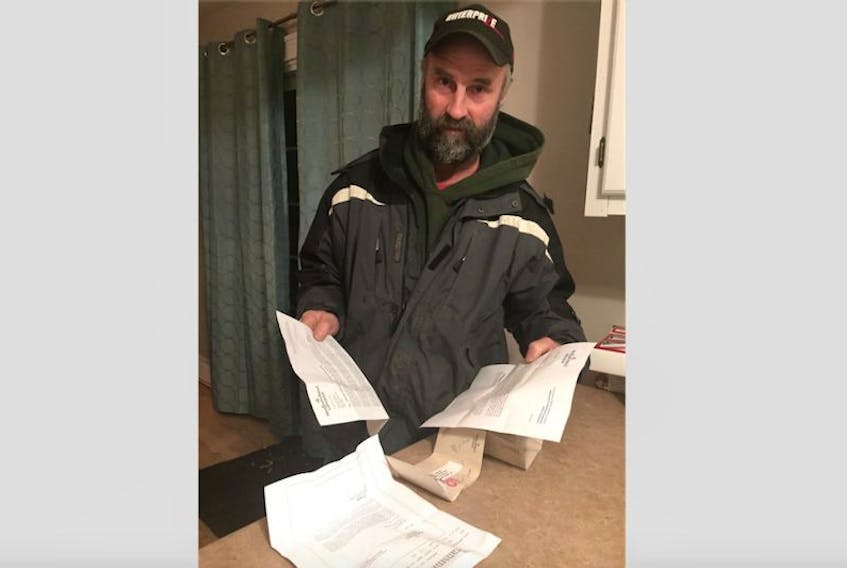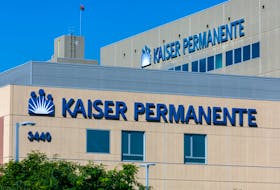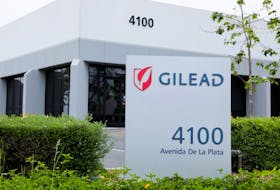However, fees being imposed by the province, may shut him down.
What was once just a $100 fee for cod grow-out, he says, has jumped to $500 to $2,000 in just a few years.
The aquaculture renewal fee for cod grow-out operations, imposed by the province’s Department of Fishery, Forestry and Agrifoods, is $1000 for 2017.
Then there’s the new annual fee, established by the province’s Department of Environment and Climate Change That’s another $1,000.
Given the fee increases, Caines hopes to be able to combine his cod quota with another harvester in 2017, to not only have more quota but to possibly reduce manpower costs.
Cains also needs to know whether or not he will be able to use traps to catch cod.
According to Caines, the cod trap is one of the best types of fishing gear, to quality fish.
“[If] you’re talking about good quality and good gear type, you can’t beat the cod trap “
It also allows him to cut back on emissions and fuel since he doesn’t have to steam around all day hauling cod pots.
The use of cod pots has been suggested by the Department of Fisheries and Oceans (DFO) and the FFAW.
“Now they (DFO & FFAW) wants me to use cod pots instead of cod traps,” he said, noting that will mean having to steam around all day hauling pots.
Caines transfers cod from his traps to cages, and then tows the cages to Keppel Harbour. There the cod are fed and grown until they are ready for market.
Here’s where Caines is caught in the middle of two levels of government.
The federal fisheries department makes the decisions on cod quotas, and catch methods. So he needs answers from DFO for the 2017 season regarding quotas and fishing gear allowed.
Answers may not be forthcoming for several weeks.
The DFO told the Northern Pen the quota will not be determined until after a full consultation process occurs, likely in the spring of 2017. And other management measures, such as season and gear types, will be determined through consultation with the industry.
As for those higher fees being imposed by the province, the Department of Fishery, Forestry and Agrifoods issued a statement, saying that processing and aquaculture fee increases have been implemented a number of times over the past decade.
According to the department, “These increases are crucial in balancing increasing costs to government for activities that serve the industry, such as quality assurance and inspection programs and compliance and enforcement.”
The environment department has not responded to TC Media’s request for an interview.
If he can’t get a larger quota of cod to catch, Caines says, the aquaculture licence may not be worth the cost.
“I can’t give (the province) $2,000 when I don’t know if there’s going to be anything to catch.”
The province’s deadline to pay these fees has been renewed for Caines on multiple occasions but he doubts he’ll get another after Dec. 31.
However, fees being imposed by the province, may shut him down.
What was once just a $100 fee for cod grow-out, he says, has jumped to $500 to $2,000 in just a few years.
The aquaculture renewal fee for cod grow-out operations, imposed by the province’s Department of Fishery, Forestry and Agrifoods, is $1000 for 2017.
Then there’s the new annual fee, established by the province’s Department of Environment and Climate Change That’s another $1,000.
Given the fee increases, Caines hopes to be able to combine his cod quota with another harvester in 2017, to not only have more quota but to possibly reduce manpower costs.
Cains also needs to know whether or not he will be able to use traps to catch cod.
According to Caines, the cod trap is one of the best types of fishing gear, to quality fish.
“[If] you’re talking about good quality and good gear type, you can’t beat the cod trap “
It also allows him to cut back on emissions and fuel since he doesn’t have to steam around all day hauling cod pots.
The use of cod pots has been suggested by the Department of Fisheries and Oceans (DFO) and the FFAW.
“Now they (DFO & FFAW) wants me to use cod pots instead of cod traps,” he said, noting that will mean having to steam around all day hauling pots.
Caines transfers cod from his traps to cages, and then tows the cages to Keppel Harbour. There the cod are fed and grown until they are ready for market.
Here’s where Caines is caught in the middle of two levels of government.
The federal fisheries department makes the decisions on cod quotas, and catch methods. So he needs answers from DFO for the 2017 season regarding quotas and fishing gear allowed.
Answers may not be forthcoming for several weeks.
The DFO told the Northern Pen the quota will not be determined until after a full consultation process occurs, likely in the spring of 2017. And other management measures, such as season and gear types, will be determined through consultation with the industry.
As for those higher fees being imposed by the province, the Department of Fishery, Forestry and Agrifoods issued a statement, saying that processing and aquaculture fee increases have been implemented a number of times over the past decade.
According to the department, “These increases are crucial in balancing increasing costs to government for activities that serve the industry, such as quality assurance and inspection programs and compliance and enforcement.”
The environment department has not responded to TC Media’s request for an interview.
If he can’t get a larger quota of cod to catch, Caines says, the aquaculture licence may not be worth the cost.
“I can’t give (the province) $2,000 when I don’t know if there’s going to be anything to catch.”
The province’s deadline to pay these fees has been renewed for Caines on multiple occasions but he doubts he’ll get another after Dec. 31.









